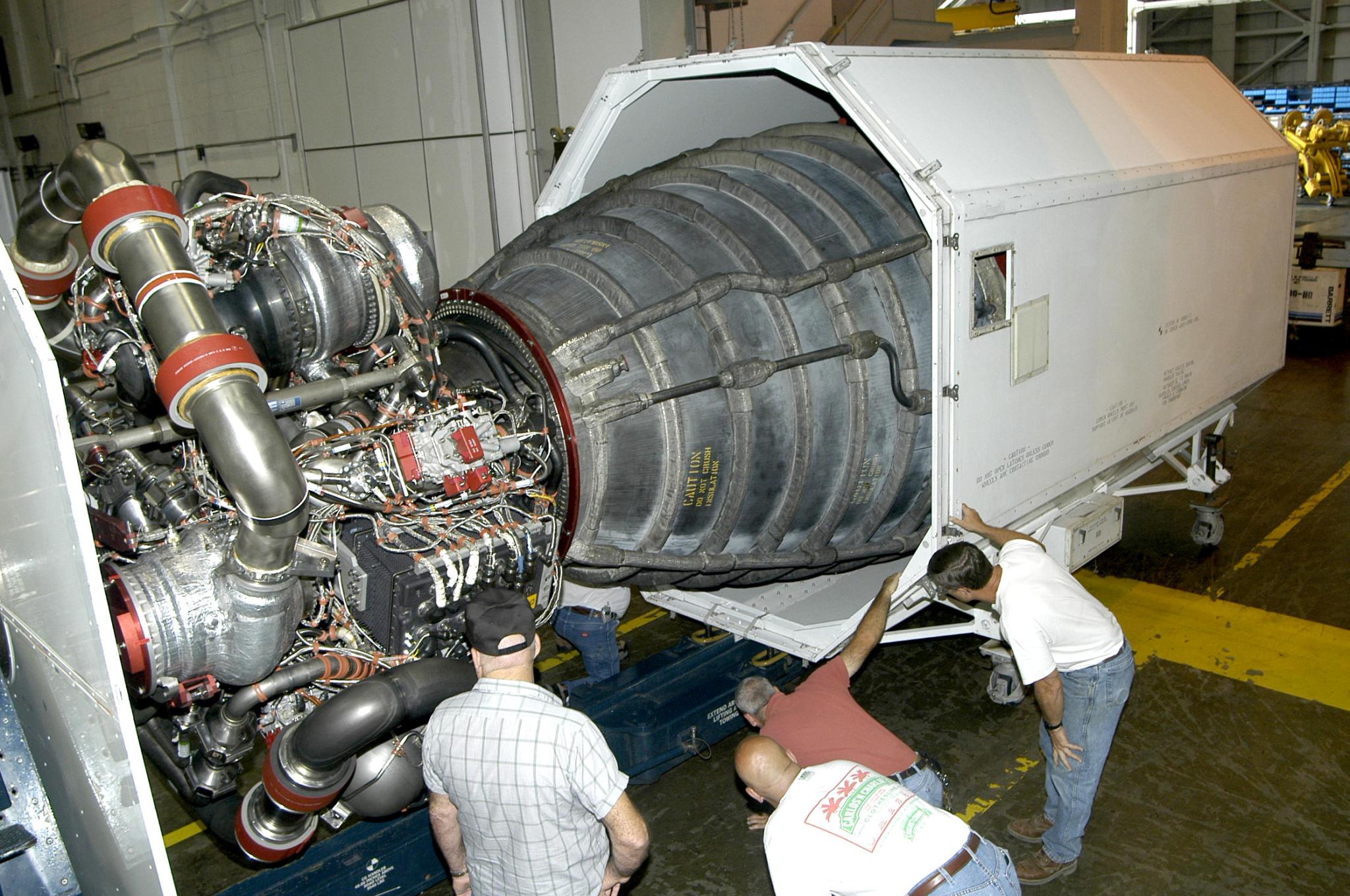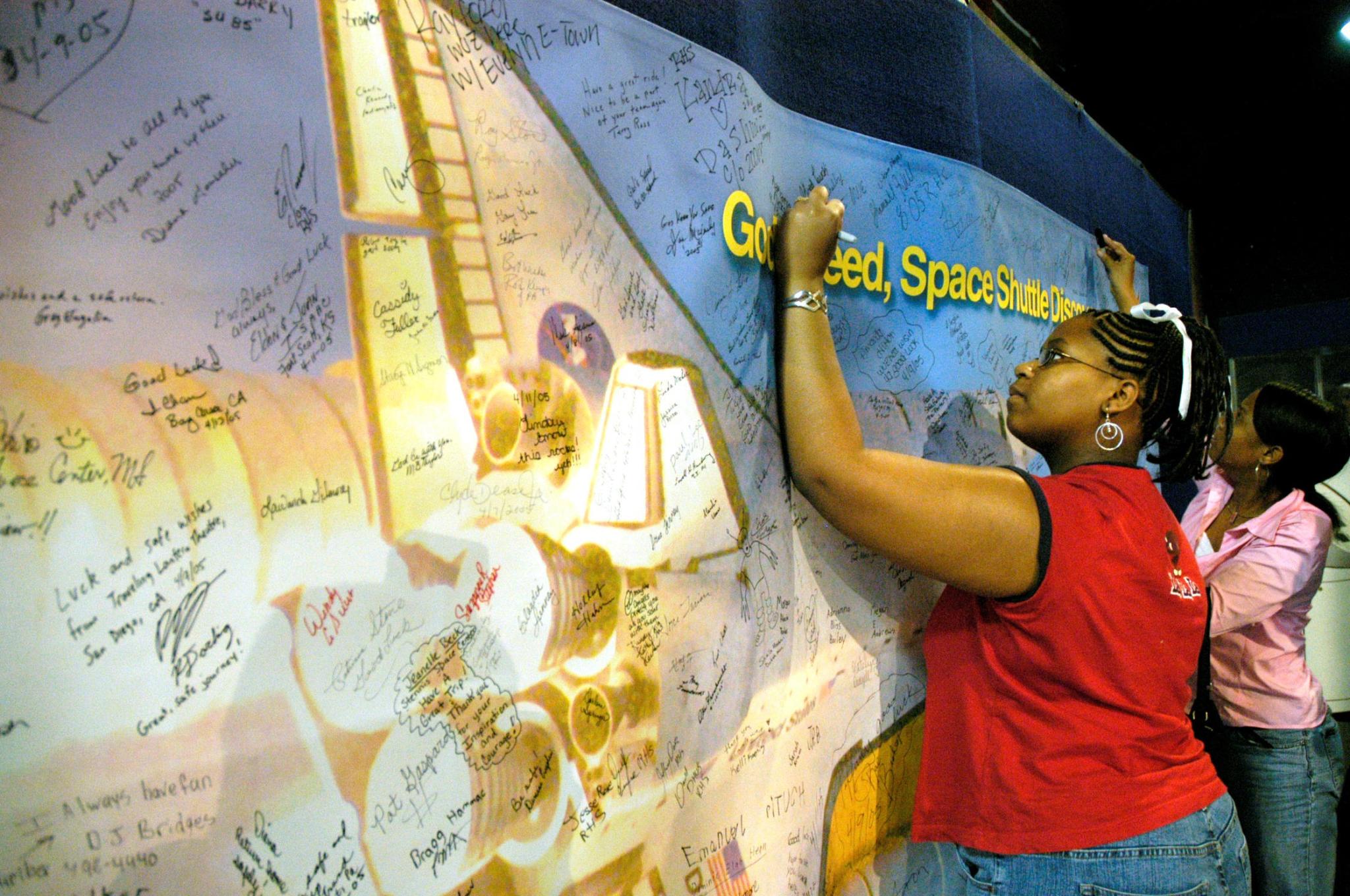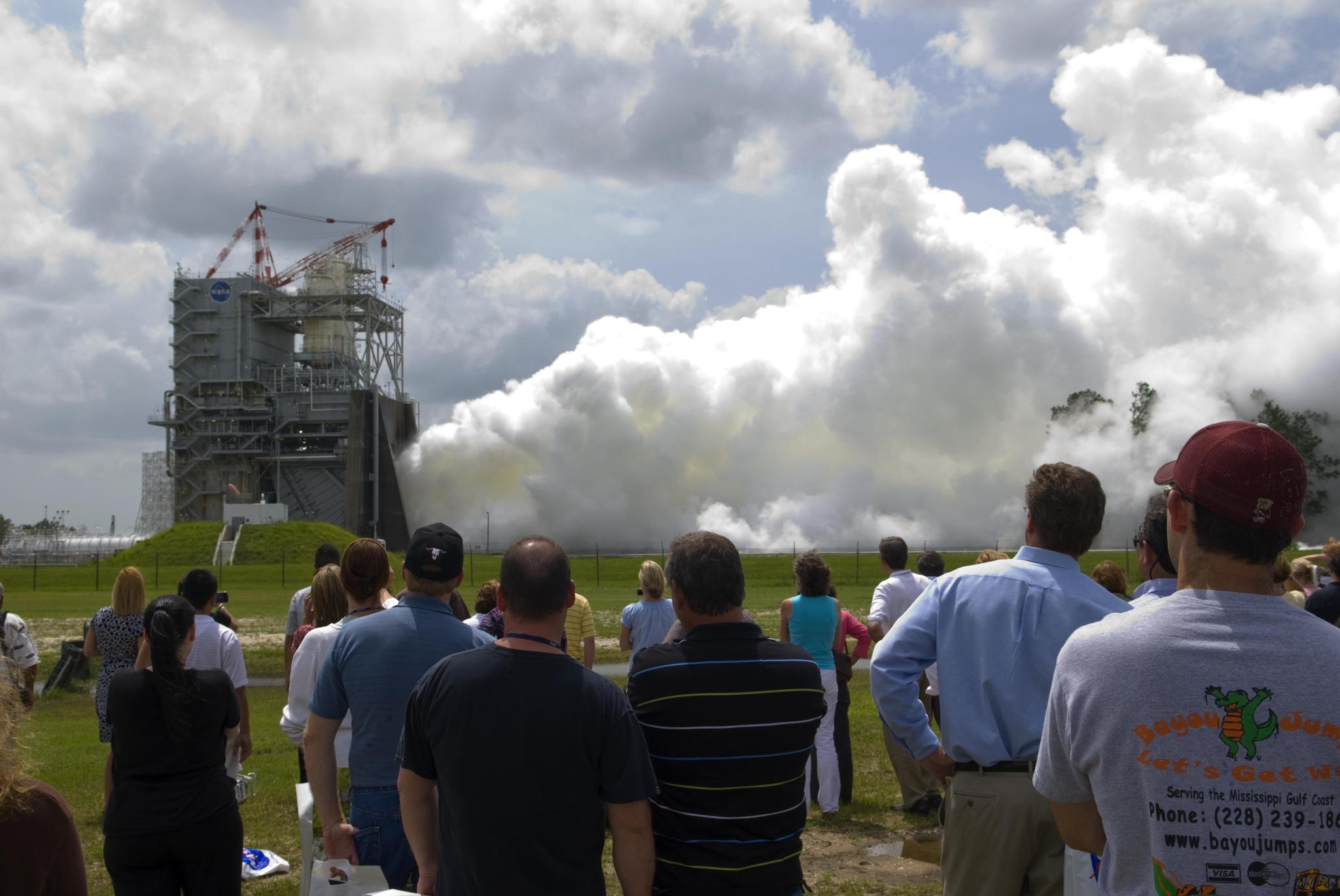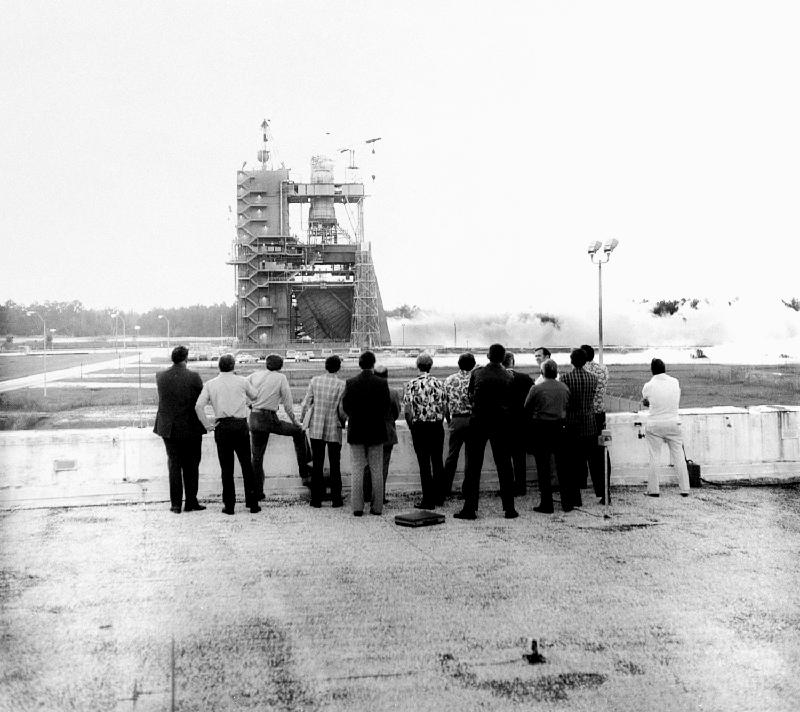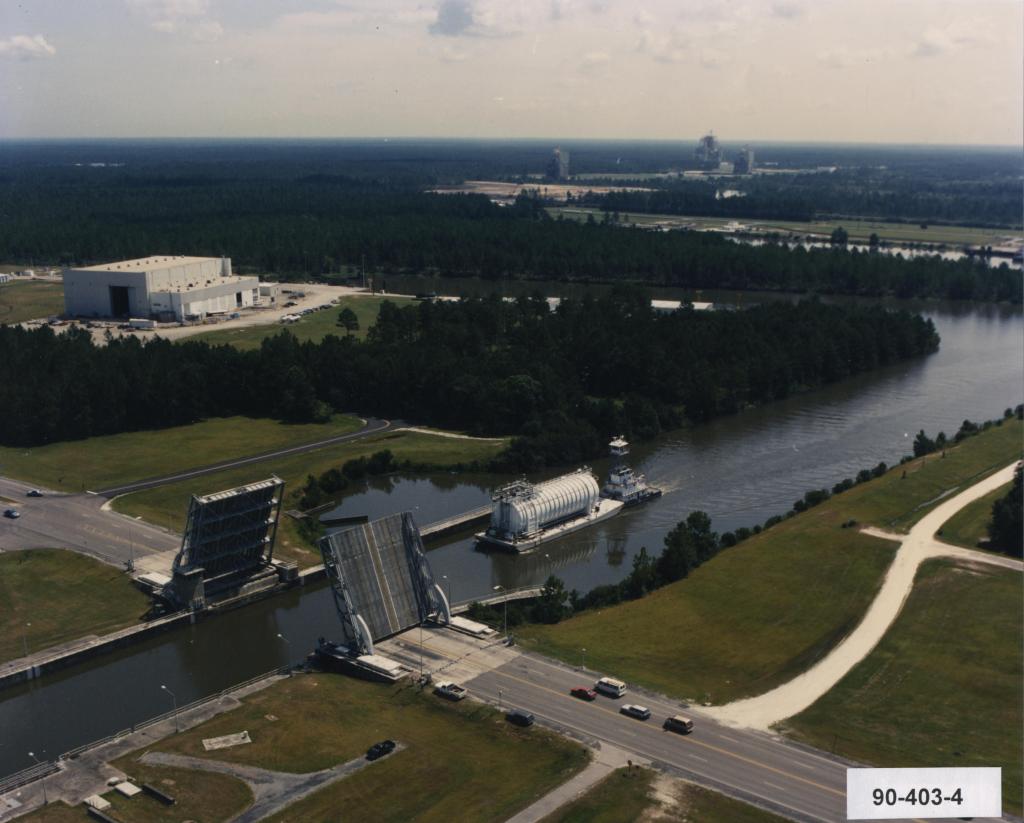2000 – Location of the Lockheed Martin Propulsion, Thermal and Metrology Center at Stennis is announced on September 1.Location of the Lockheed Martin Propulsion, Thermal and Metrology Center at NASA Stennis is announced on Sept. 1.
2000 – A $25 million construction project begins at NASA Stennis for the Naval Small Craft Instruction and Technical Training School and Special Boat Unit TWENTY-TWO in support of Navy SEAL activity on Sept. 29.
2001 – NASA Stennis opens its doors on April 21 to more than 13,000 visitors for the first-ever public night test firing of a SSME.
2001 – Work begins on nearly $24 million worth of upgrades on E Test Complex facilities at NASA Stennis in May.
2001 – The StenniSphere visitor center and museum receives its 250,000th visitor on May 22.
2001 – NASA conducts the final test of a three-part test series of electro-mechanical actuator technology used on the former X-33 program’s Linear Aerospike XRS-2200 flight engine on Aug. 6. The series is conducted at NASA Stennis as part of NASA’s Space Launch Initiative.
2001 – The E Test Complex at NASA Stennis successfully completes the first phase in an important test series for the integrated powerhead demonstrator (IPD) liquid oxygen turbopump during November. The IPD Program is developing new technologies for NASA’s second-generation propulsion systems.
2002 – The launch of shuttle Atlantis on the STS-110 mission marks a milestone for NASA and NASA Stennis as the first flight to use a full complement of the Block II configuration of the space shuttle main engine on April 8.
2002 –Ribbon-cutting ceremonies are held at NASA Stennis on Aug. 5 for the following three facilities, valued at more than $60 million: the Lockheed Martin Mississippi Space and Technology Center, the Naval Small Craft Instructional and Technical Training School and Special Boat Unit TWENTY-TWO and the Naval Oceanographic Office Warfighting Support and Survey Operations Center.
2002 – NASA’s Bill Parsons is named director of NASA’s Stennis Space Center on Aug. 25.
2003 – Bill Parsons is selected as the manager for NASA’s Space Shuttle Program on May 9.
2003 – Michael Rudolphi is named interim director of NASA’s Stennis Space Center on May 9.
2004 – Rear Admiral Thomas Q. Donaldson, V (Ret.) is named director of NASA’s Stennis Space Center on Jan. 5.
2004 – NASA marks a milestone on Jan. 21 as the space shuttle main engine achieves a significant milestone of 1 million seconds of test and flight operations during a test firing at NASA Stennis.
2004 – NASA Stennis ships the last of space shuttle Discovery’s three main engines on Oct.5 to Kennedy Space Center in Florida, for NASA’s Return to Flight following the loss of space shuttle Columbia. All three of Discovery’s main engines were tested and proven flightworthy at NASA Stennis. Discovery’s STS-114 mission launched July 26, 2005, and safely landed at Edwards Air Force Base in California, on Aug. 9, 2005.
2005 – A hot fire test on the A-2 Test Stand marks the 30th anniversary of space shuttle main engine testing at NASA Stennis on Aug. 11.
2005 – Hurricane Katrina makes landfall, battering southeast Louisiana and the Mississippi Gulf Coast on Aug. 29. Maps of its track show Katrina’s eye moved up the Pearl River and passed directly over NASA’s Stennis Space Center.
2005 – Bill Parsons is named director of NASA’s Stennis Space Center on Sept. 13.
2006 – Dr. Richard Gilbrech is named director of NASA’s Stennis Space Center on Jan. 23.
2006 – A space shuttle main engine test on the A-2 Test Stand marks the 40th anniversary of the first engine test at NASA Stennis on April 21.
2006 – NASA announces center responsibilities associated with its Constellation Program for robotic and human Moon and Mars exploration. NASA Stennis is named to manage and integrate rocket propulsion testing for the Crew Launch Vehicle Project on June 5. The center also is assigned to lead sea-level development, certification and acceptance testing for the upper stage engine; sea-level development testing for the upper stage main propulsion test article; and sea-level acceptance testing for the flight upper stage assembly.
2006 – NASA conducts the final space shuttle main engine test on Sep. 29 to be conducted on the A-1 Test Stand at NASA’s Stennis Space Center.
2006 – The A-1 Test Stand at NASA Stennis is officially handed over for testing next-generation J-2X engines being developed for NASA on Nov.9.
2007 – NASA announces a decision to build a new test stand at NASA’s Stennis Space Center on May 8. The 300-foot-tall test stand, featuring an open-frame design, will allow engineers to test rocket engines at simulated altitudes up to 100,000 feet.
2007 – Tree clearing begins for construction of the new A-3 Test Stand at NASA Stennis on June 13.
2007 – NASA officials and government leaders participate in an official groundbreaking ceremony for the A-3 Test Stand at NASA Stennis on Aug. 23. Taking part in the event are Mississippi Gov. Haley Barbour, U.S. Sen. Thad Cochran, U.S. Sen. Trent Lott, U.S. Rep. Gene Taylor, NASA Deputy Administrator Shana Dale, NASA Associate Administrator for Exploration Systems Scott Horowitz and NASA Stennis Director Rick Gilbrech.
2007 – Core components, known as Powerpack 1A, needed for development of the next-generation J-2X engine are installed on the A-1 Test Stand at NASA’s Stennis Space Center on Sept. 19.
2007 – Robert D. Cabana is named director of NASA’s Stennis Space Center on Sept. 30.
2008 – A gas generator ignition test on the A-1 Test Stand at NASA Stennis marks the first hot fire test on the Powerpack 1A component of the next-generation J-2X engine on Jan. 31.
2008 – NASA Stennis Director Robert D. Cabana joins a distinguished list of American space heroes with his induction into the U.S. Astronaut Hall of Fame at Kennedy Space Center in Florida on May 3.
2008 – NASA Stennis engineers successfully complete the first series of tests on the Powerpack 1A component as part of early development of the J-2X engine that could help carry humans on deep-space missions on May 8. The test hardware consisted of J-2 components used from the Apollo program in the 1960s through the X-33 program of the 1990s.
2008 – The last space shuttle flight engine scheduled for testing at NASA Stennis (engine No. 2061), arrives on Oct. 1.
2008 – A flight-certification test on space shuttle main engine No. 2061, the last space shuttle main flight engine scheduled to be built, is conducted on the A-2 Test Stand on Oct. 22.
2008 – Fabricated steel begins arriving by truck for construction of the A-3 Test Stand on Oct. 24, which will be used to test next-generation rocket engines.
2008 – Arthur E. ‘Gene’ Goldman is named director of NASA’s Stennis Space Center on Nov. 20.
2009 – Structural steel work is completed on the A-3 Test Stand at NASA Stennis on April 9. The final beam is ceremoniously placed atop the structure as more than 100 guests and workers looked on.
2009 – The new Stennis Emergency Operations Center is officially opened as Gov. Haley Barbour, NASA Associate Deputy Administrator Charles Scales, NASA Stennis Director Gene Goldman and other officials participate in a ribbon-cutting ceremony on June 2. The 78,688-square-foot facility houses the facility’s medical clinic, fire department, security services, energy management control system and incident command post.
2009 – Construction of the A-3 Test Stand marks a milestone with completion of a pair of transfer docks to be used for delivery of rocket propellants (or fuel) on July 2.
2009 – NASA conducts the last scheduled test of a space shuttle main engine on the A-2 Test Stand at NASA Stennis on July 29.
2009 – Biloxi native and Apollo 13 astronaut Fred Haise receives NASA’s Ambassador of Excellence Award during a ceremony at Gorenflo Elementary School in Biloxi on Dec. 2.
Chronology of Events
Explore the list of significant events in John C. Stennis Space Center History.




























